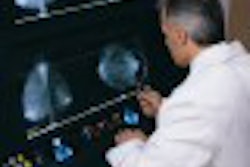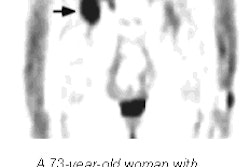MONTEREY, CA - Women who undergo core-needle biopsy for breast cancer detection can be just as anxious as those who must cope with more serious surgery. But when biopsies turn out to be unnecessary -- ordered due to false-positive mammographic interpretations -- the results can be troubling for both patients and radiologists.
Dr. Lawrence Bassett discussed the importance of reducing false-positive results, and strategies for doing so, during a presentation Monday at the 2001 Breast Imaging Conference in Monterey, CA, sponsored by Instrumentarium Imaging. Bassett is the director of the Iris Cantor Center for Breast Imaging at the University of California, Los Angeles.
"False positives continue to plague screening mammography. That we continually recommend work-up on patients who don’t have cancer, and biopsies on those patients, does have some adverse consequences," he said.
Bassett cited a 2001 Institutes of Medicine report that confirmed mammography as the gold standard for breast cancer detection, but also said that 75% of all breast lesions that are biopsied due to suspicious mammographic findings turn out to be benign.
One of those adverse consequences is patient anxiety. At Bassett’s institution, a psychologist was brought in to assess 52 consecutive patients before and after core-needle biopsy.
Using a psychological scale on which 33 was considered a normal level of anxiety for a healthy person, the group found that, before the biopsy procedure, the women’s average anxiety level was at 47, higher than the 42 reported for patients undergoing other kinds of major invasive surgery. In addition, it took 30 days post-procedure for the anxiety of women with benign results to fall to a normal level, Bassett said.
"We looked in the literature to see if we could find anything comparable. We could only find one study that showed anxiety that high, and it was done on patients being admitted to the neuropsychiatric institute," he said. "The biopsy is very scary. It’s not [about] pain and it’s not [about] bruising. It really is the fear of what you are going to find, and that is what we can reduce."
One option is to offer sedative medication to women who are undergoing core-needle biopsy. In a second part of the survey, Bassett said his group found that women who took 0.5 mg of Xanax, administered sublingually, experienced a 44% drop in anxiety during the procedure.
Other ways to soothe nervous patients include offering follow-up appointments as early as the next day after screening, and for the radiologist to discuss the false-positive results with the patient.
"You are much better off telling the patient than to rely on the referring physician," Bassett said. "The patient has only one person to take care of in terms of breast health, whereas the referring physician may have tons of patients that they have to take care of. A patient is a good person to take that responsibility."
In terms of reducing false-positives and callbacks in breast screening, Bassett shared suggestions originally conceived by Dr. Edward Sickles from the University of California, San Francisco. Mammographers should:
- Conduct high-quality screening.
- Use two-view screening to reduce suboptimal images.
- Compare images with previous breast cancer screening exams.
- Deal with subtle findings of doubtful significance.
With regard to the latter, "Dr. Sickles has emphasized that you learn those things that don’t need to be called back because you see them all the time," Bassett said. Such phenomena include calcifications, asymmetries, nodules, densities, and architectural distortion. Studies using ultrasound at six month follow-up of suspicious lesions have shown that less than 1% of solid masses (local clusters) turn out to be malignant, and nearly 98% of these masses are benign.
In general, mammographers should strive for a recall rate of between 5% and 10%, and a positive predictive value for biopsies of above 20%, Bassett said.
"One thing we can do to achieve this is to really look at the biopsies that you recommend," he explained. "After you recommend them, look at the results, look at the films and try to understand what you are doing. Are you calling back too many? Are you biopsying too many? By just following up on those cases, you could learn a lot."
By Shalmali PalAuntMinnie.com staff writer
October 16, 2001
Related Reading
Low mammography recall rates may produce best outcomes, October 4, 2001
Patients won't pay more for quick breast cancer screening results, September 6, 2001
Film-screen mammography remains gold standard, IOM says, March 8, 2001
Copyright © 2001 AuntMinnie.com



















